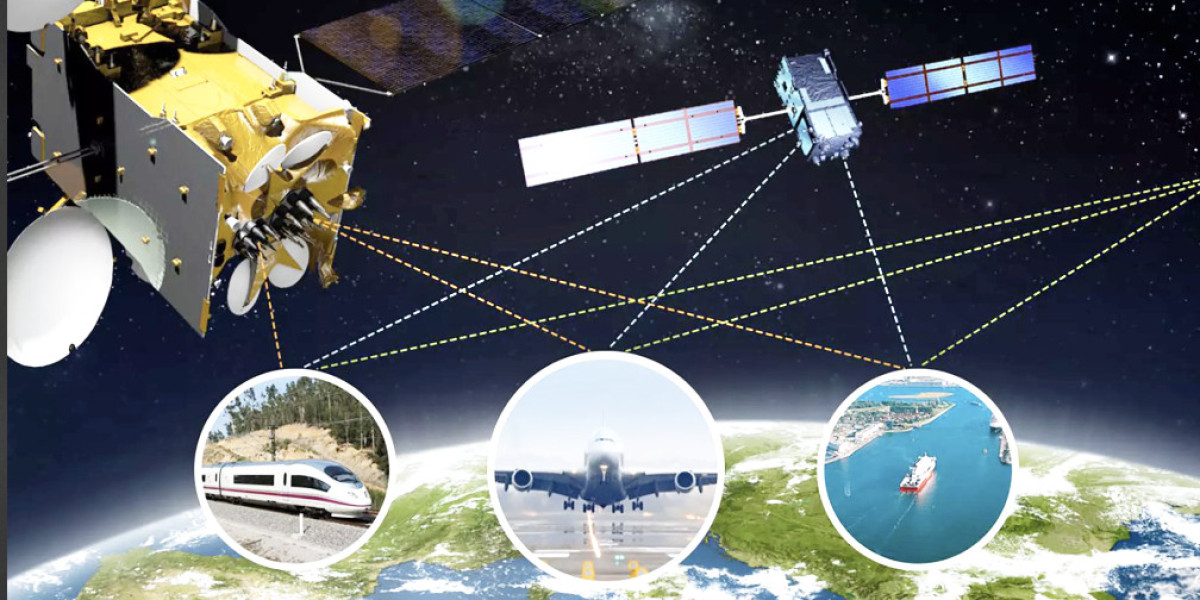The Emergence of Satellite as a Service Industry
The demand for connectivity has risen exponentially over the past decade as more devices become connected and data usage continues to grow. Traditional terrestrial infrastructure like fiber and cellular have struggled to keep up with this demand, especially in remote and hard-to-reach areas. This is where satellite communication has emerged as a viable solution.
Instead of large, expensive satellites owned by a single operator, the new paradigm is Satellite as a Service (SaaS) where smaller, cheaper satellites are deployed in large constellations to provide global coverage. Several companies have recently launched or are in the process of launching massive Low Earth Orbit (LEO) satellite constellations that will bring broadband connectivity to unserved and underserved regions around the world.
SpaceX Leads the Pack with Satellite as a Service Industry
Founded by Elon Musk in 2002, SpaceX has become a pioneer in reusable rocket technology and private spaceflight. In 2019, SpaceX received approval from the FCC to launch over 12,000 satellites for its Starlink broadband satellite constellation. So far, over 1,500 Starlink satellites have been launched to date. Starlink offers internet access around the world and targets delivering speeds between 100 Mb/s to 1 Gb/s with latencies as low as 20ms. Its satellites orbit the Earth at around 550km, much lower than traditional geostationary satellites, allowing for high speeds and low latencies competitive with terrestrial solutions. SpaceX plans full global coverage by 2023 and expects to generate $30 billion-$50 billion annually from Starlink. Apart from individuals, Starlink also targets organizations, maritime and aeronautical internet users.
Others Not Far Behind with Their Own Constellations
Not wanting to be left behind, others have also jumped into the Satellite as a Service fray. In 2019, Amazon received FCC approval for a constellation of 3,236 satellites called Project Kuiper. With an expected investment of over $10 billion, Kuiper plans to provide high-speed, low-latency broadbandglobally. While details are limited, Amazon aims to launch the majority of its constellation by 2029. Similarly, London-based OneWeb received permission for a constellation of 648 LEO satellites and has over 300 satellites in orbit currently. OneWeb focuses on bridging the digital divide by connecting schools, governments, small businesses and communities globally. In 2022, it plans to offer services in Alaska, Canada, UK, and polar regions with others markets to follow. Smaller regional players like Galaxy in Asia and Swarm elsewhere are also emerging with plans for SaaS.
Applications in Business and Government
Satellite as a service has widespread business applications by enabling ubiquitous connectivity globally. Enterprises with supply chain operations, field workers, remote sites will benefit from reliable high-speed connectivity anywhere. Connected vehicles, asset tracking and telematics solutions can leverage satellite connectivity for monitoring shipments, fleets and infrastructure. Maritime and aviation customers can stay Internet connected while travelling or during emergencies. Cruise ships, container vessels, cargo planes and commercial airlines are potential users. Satellite connectivity also empowers smart city, IoT and M2M applications for utilities, transport and infrastructure. Governments and humanitarian agencies will leverage SaaS to connect rural schools, healthcare centers, citizens in developing nations and during natural disasters or conflicts. Emerging technologies like telemedicine and distance education will be more accessible globally.
Challenges Facing Satellite Constellation Operators
While satellite SaaS has vast potential, operators still face numerous technical and deployment challenges. Launching thousands of satellites, especially at such rapid pace, runs risks of collisions and space debris. SpaceX, OneWeb and others are working with organizations like NASA and ESA to safely conduct on-orbit operations. Managing satellite health, replacing failures, optimizing performance and maintaining constellation coordination is an ongoing operation requiring massive ground infrastructure.
High launch costs and the uncertainties of rocket technology also pose schedule risks. Inter-satellite laser links and efficient ground station mesh networks are needed for scalable, affordable backhaul. Cybersecurity of satellite networks against hacking or interference must also be addressed. Regulatory compliance across countries and spectrum allocation remain to be standardized fully. Nevertheless, with infrastructure investments in the billions, satellite as a service looks set to revolutionize global connectivity in the coming years.
Get more insights on this topic: https://www.pressreleasebulletin.com/satellite-as-a-service-global-satellite-as-a-service-an-emerging-trend-in-the-space/
About Author:
Ravina Pandya, Content Writer, has a strong foothold in the market research industry. She specializes in writing well-researched articles from different industries, including food and beverages, information and technology, healthcare, chemical and materials, etc. (https://www.linkedin.com/in/ravina-pandya-1a3984191)







